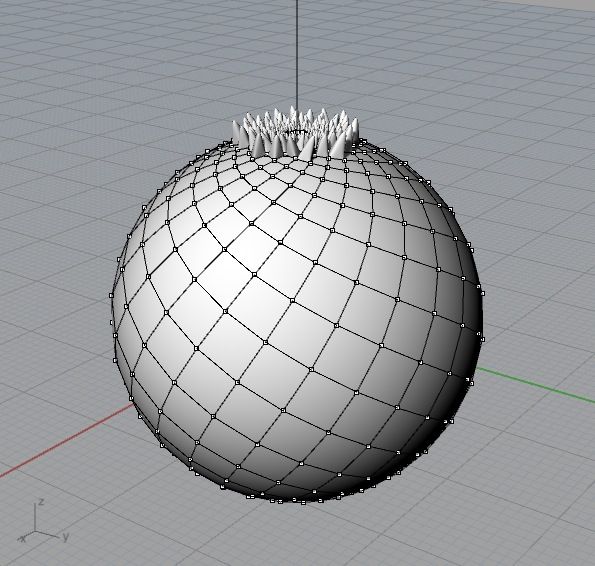Spirals, fractals, and even bone length proportions whisper of a consistent ratio woven into the universe. Math is hidden in the fabric of things, and when this fact is observed in art, magic happens. Professor, artist, and inventor [John Edmark] draws inspiration from geometric patterns found in nature and builds sculptures using the golden ratio as a standard for design. In this project, he expresses these characteristics through animated biomorphic zoetropes.
 [John] modeled several 3D sculptures in Rhino containing similar geometric properties to those found in pinecones and palm tree fronds. As the segments grow from those objects in nature, they do so in approximately 137.5 degree intervals. This spacing produces a particular spiral appearance which [John] was aiming to recreate. To do so, he used a Python script which calculated a web of quads stretched over the surface of a sphere. From each of the divisions, stalk-like protrusions extend from the top center outward. Once these figures were 3D printed, they were mounted one at a time to the center of a spinning base and set to rotate at 550 RPM. A camera then films the shape as it’s in motion at a 1/2000 sec frame rate which captures stills of the object in just the right set of positions to produce the illusion that the tendrils are blooming from the top and pouring down the sides. The same effect could also be achieved with a strobe light instead of a camera.
[John] modeled several 3D sculptures in Rhino containing similar geometric properties to those found in pinecones and palm tree fronds. As the segments grow from those objects in nature, they do so in approximately 137.5 degree intervals. This spacing produces a particular spiral appearance which [John] was aiming to recreate. To do so, he used a Python script which calculated a web of quads stretched over the surface of a sphere. From each of the divisions, stalk-like protrusions extend from the top center outward. Once these figures were 3D printed, they were mounted one at a time to the center of a spinning base and set to rotate at 550 RPM. A camera then films the shape as it’s in motion at a 1/2000 sec frame rate which captures stills of the object in just the right set of positions to produce the illusion that the tendrils are blooming from the top and pouring down the sides. The same effect could also be achieved with a strobe light instead of a camera.
[John] has more information on his instructables page. He also provides a video of this trick working with an actual artichoke; one of the living examples of the golden ratio which this project was inspired by. Thank you, [Charlie Nordstrom] for helping him document these awesome sculptures and for telling us about them!
















Artichokes on a lathe… This just happens to be a lot more interesting than it sounds.
Seems like a lot of work to make a video that could as easily been made completely on a computer but the sculptures are cool.
I felt shivers down my spine watching this, because it was exactly what I experienced all around me during acid trip many years back, well, sans all the colours. Something i could never describe later on. So very beautiful.
Best use ever for an artichoke. How anyone can call the disgusting things “food”… right down there with bleu cheese and brussels sprouts.
I disagree. Artichokes are really good with a vinaigrette. The same applies for the brussels sprouts, cooked with bacon and onions. You may be good at electronic, but not at cooking ^^
*fistbump*
2nd mention of disgusting Brussels sprouts on Hackaday comments today :p. They taste like rotten cabbage that’s been stored in a homeless man’s socks.
http://hackaday.com/2015/01/13/magnid-sneaky-new-way-of-interacting-with-tablets/
No way, their great, especially fried in butter and garlic, amazing!
Heh, cool. I wonder if Romanesco Broccoli would work too. A veggie which my brain still rejects as unreal:
http://www.maths.surrey.ac.uk/hosted-sites/R.Knott/Fibonacci/romanesque.jpg
That is a beautiful vegetable. Wonder how it tastes.
like math.
These really remind me of the ferrofluid experiments with cones etc. Very similar effect.
“This is the Spinning Artichoke. You are getting sleepy, your butter is melting.” What is that name of that zoetrope effect, same thing as when you look at a spoked wheel at high speed and it appears to be slowly turning backwards (or forward as seen here)?
I believe the effect you are referring to is called ‘aliasing’, which is a such heavily overloaded term now that I believe it should probably be called something else!